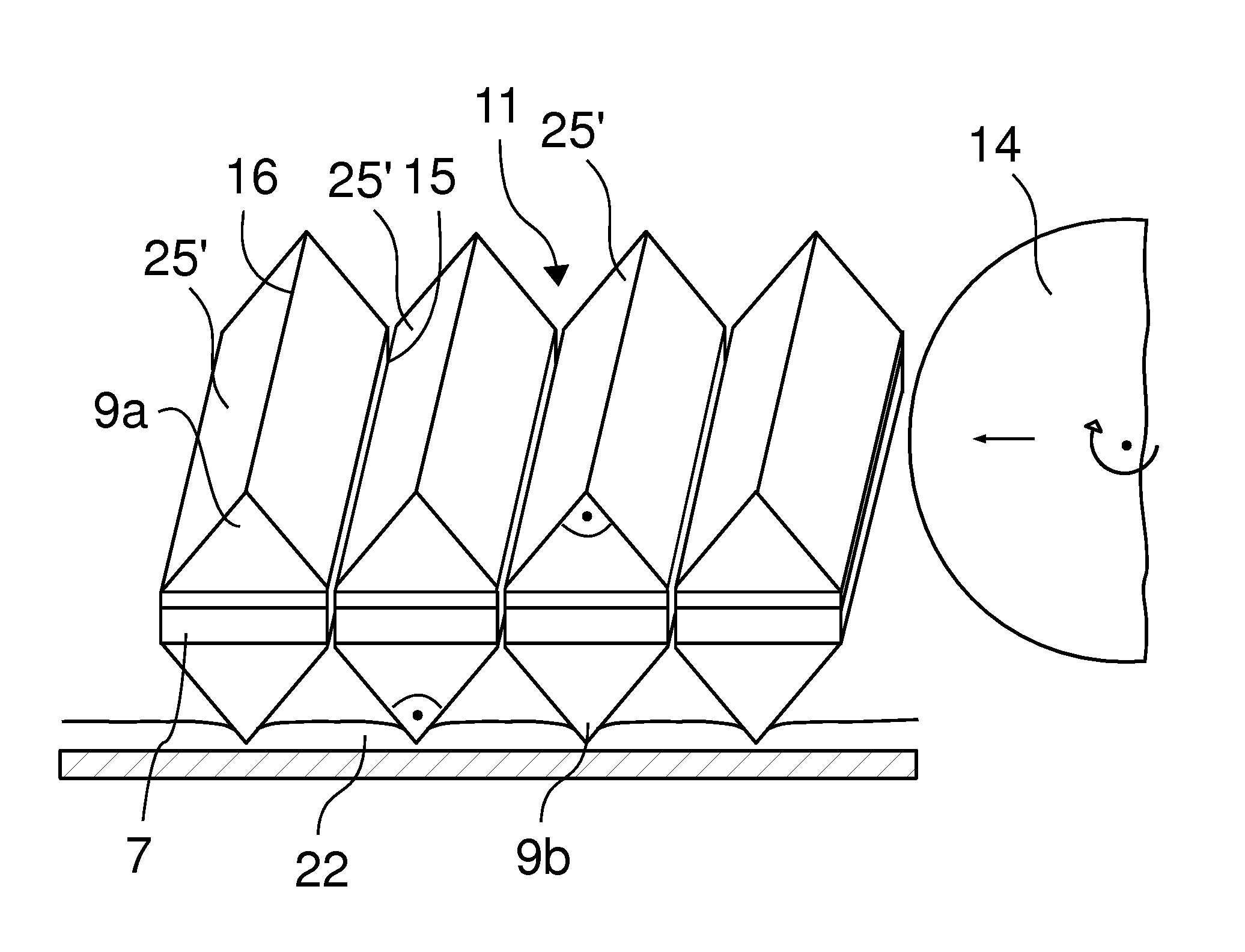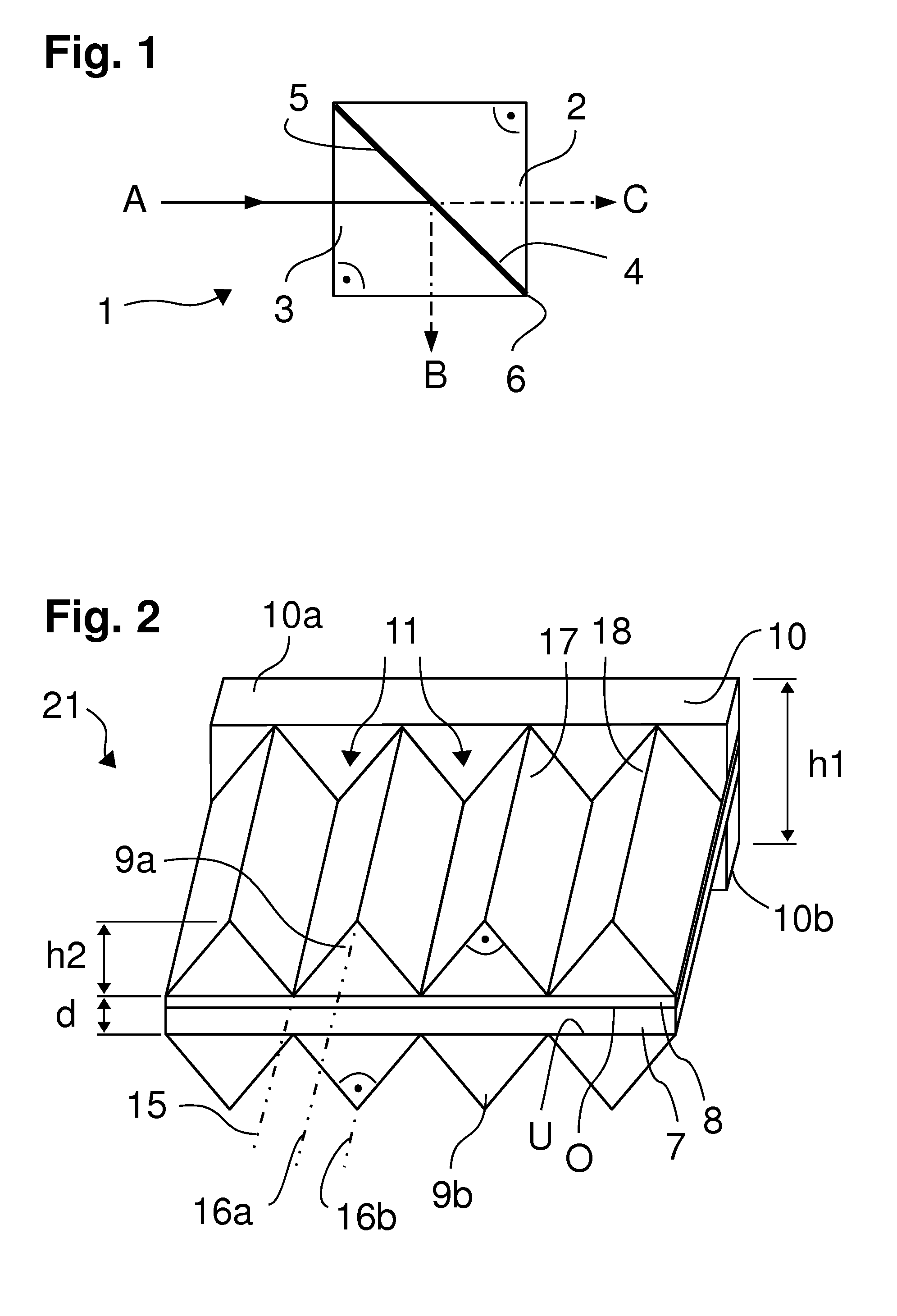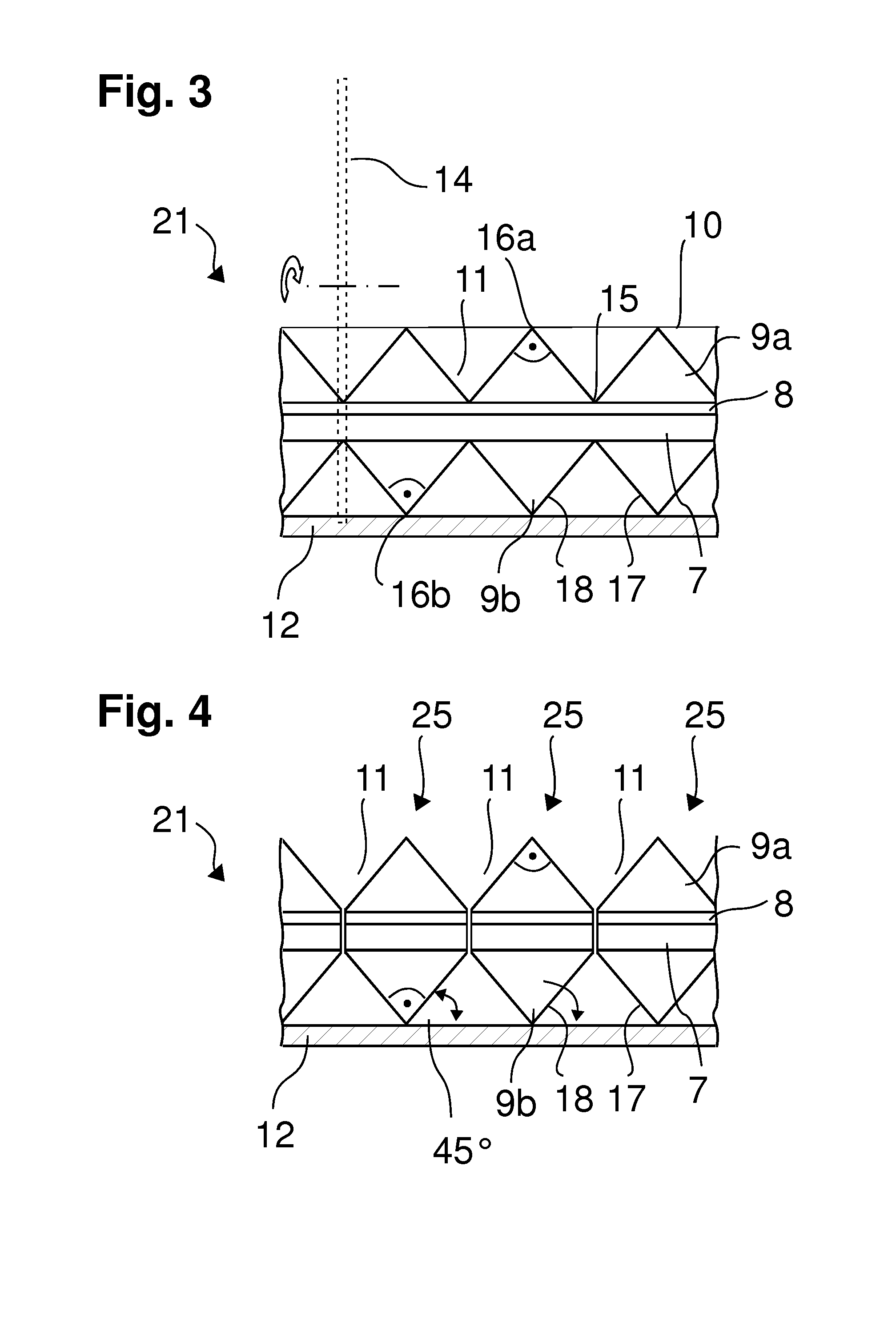Method for producing optical beam splitter cubes
a technology of optical beam splitter and cube, which is applied in the direction of glass separating apparatus, glass making apparatus, instruments, etc., can solve the problems of high production cost, complex production and thus high production cost, and is not possible until now to use the splitter cube in very cost-sensitive application cases, so as to achieve more cost-effective production and cost-sensitive
- Summary
- Abstract
- Description
- Claims
- Application Information
AI Technical Summary
Benefits of technology
Problems solved by technology
Method used
Image
Examples
Embodiment Construction
[0065]The representation of FIG. 1 shows a schematic, simplified side view of a beam splitter cube 1. This has two prisms 2, 3 which are right-angled triangles in cross section and which are laid with their base surfaces 4, 5 against each other and are cemented together by means of a cement layer.
[0066]In FIG. 1 a light beam A is also shown which is incident through an optical side face of the prism 3 into the beam splitter cube 1, wherein the base surfaces 4, 5, lying against each other, of the prisms 2, 3 lie at a 45° angle to the beam path of the incident beam A.
[0067]A portion of the light beam A is reflected at the joint plane, formed by the two base surfaces 4, 5, of the beam splitter cube 1 at an angle of 90° and emerges as a partial beam B on the other optical side face of the prism 3.
[0068]However, a portion of the entrance beam A passes through the beam splitter cube 1 and emerges from it again as partial beam C on its cube side opposite the entry side of the entrance beam...
PUM
| Property | Measurement | Unit |
|---|---|---|
| angle | aaaaa | aaaaa |
| tilt angle | aaaaa | aaaaa |
| angle | aaaaa | aaaaa |
Abstract
Description
Claims
Application Information
 Login to View More
Login to View More - R&D
- Intellectual Property
- Life Sciences
- Materials
- Tech Scout
- Unparalleled Data Quality
- Higher Quality Content
- 60% Fewer Hallucinations
Browse by: Latest US Patents, China's latest patents, Technical Efficacy Thesaurus, Application Domain, Technology Topic, Popular Technical Reports.
© 2025 PatSnap. All rights reserved.Legal|Privacy policy|Modern Slavery Act Transparency Statement|Sitemap|About US| Contact US: help@patsnap.com



